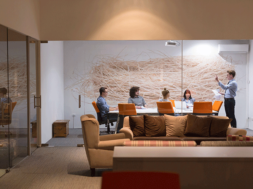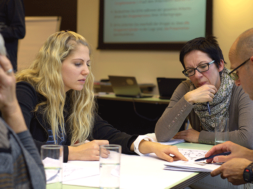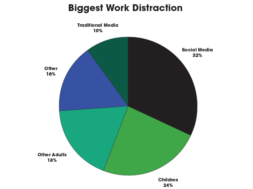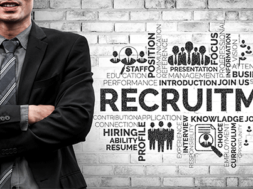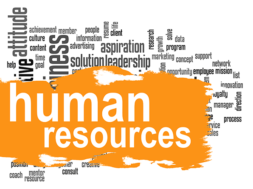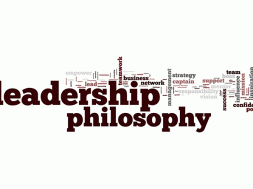
Is Your Team Unravelling? This Might be What is Going on
By Jodie Gastel, Enrollment Resources
“Despite the horrific news of a world pandemic, Amanda* was almost excited at the prospect of working from home. As a client-facing admissions advisor, she was very glad her school took swift action to ensure both staff and students were kept safe, so while there were a lot of unknowns, spirits were high and the can-do attitude was strong. The first few weeks went well; everyone understood technology snafus were par for the course, and all the prospective students and staff Amanda interacted with had patience because ‘we’re all in this together,’ aren’t we?”
“Take Care of Your Employees!” shout the articles from the past six months. Every professional organization, every business, and every school penned their own “We care about you” message, and outlined what they are – or what others should be – doing. You may recall in the July 2020 issue of the Career Education Review, Dr. Wallace Pond gave an excellent outline with actionable items.
But what is actually happening to people? With all we have available, why does managing emotions and work still seem so hard?
We’ve been given the mushy terms “fight or flight” and “existential crisis” and many people are nodding in agreement in such a way that leads us to believe this should be enough of an explanation. Viscerally, we know. Intuitively, we concede. Intellectually?
To know is to understand.
When you understand something intimately, you gain the ability to make informed decisions and change course when results are different than expected.
None of your employees and coworkers will be managing their lives in the same way as each other. Nor will all of them respond and react in the same way, so it stands to reason that not everyone will use or access the supports in the same way. Or at all.
The support systems are essential; they are the foundation of necessary health measures to keep everything running. To help your team access them and understand why it’s worth the effort, let’s add more knowledge about the process we’re all burdened with – Allostatic load.
“Nine weeks into working from home, Amanda is hanging in there. Her enrollment rate is still strong, and she’s managed to keep up with her tasks, along with a few extra responsibilities when a coworker was diagnosed with COVID-19. The coworker has been sick for four weeks now, but the prognosis looks good, even if a full recovery is going to take a while. Amanda has restructured the workload so she now has help and manages the team to ensure everything gets done, including organizing round-robin meal delivery for the coworker. It’s been a bit of a push to keep everyone on-track, a few things fell through the cracks, and with a little bit of gumption, everything was fixed, filed, and found just in time. And then she got the phone call…
Amanda’s sister, her best friend, is sick with COVID-19. Really sick.”
Fight. Flight. Freeze.
Just about everyone has a general idea and understanding of the bear-in-the-woods analogy: our hero is walking in the forest and comes face to face with a large bear, the bear charges, and then the hero of our story acts in one of three ways. When the hero escapes, there is a sensational story to tell, healing begins, and life returns to normal albeit with a healthier respect for safety during a woodland adventure.
This is easy to parse, because there are solid “things” and concepts to grab onto. We have the danger, the action taken to mitigate the danger, then the danger passes signaling the beginning of recovery and internalization of lessons. A beginning, middle, and end. It’s the same with disasters involving fire, flood, or earthquake. The event roars in, people muster, then cleanup and rebuilding can begin. Something big happens, we adapt and react, the event ends.
The challenge we are collectively facing with COVID-19 is that our proverbial bear is just not going away, and we have no idea when it will leave. Our bodies feel like there could be a bear around every corner from the time we wake up, until we sleep at night, ever at-the-ready and expected to also deal with all the fires (e.g. someone close gets sick), floods (e.g. on-the-fly emergency fixes), and earthquakes (e.g. managing both your and others’ heightened emotions) that come our way. On top of that we still need to work, manage, parent, shop, adjust, care, decide.
There is nothing satisfying and immediate we can do to fix this omnipresent, background fear (i.e., we can’t fight it, can’t run from it, nor can we just stand there), so this starts to take its toll.
“Her children are starting to become angry, bored, even belligerent at times because it’s so not fair that their friend Aiden got to go to the park, and the other friend Jennifer got to go see HER friends. It’s a struggle to keep them on-task and entertained, especially when she has so many video interviews and calls to make (and who hasn’t seen the videos of children making appearances – sometimes covered in food – during a live Zoom call?). Not to mention they have not been able to go to Dad’s place in forEVER. Still, she pushes up her sleeves. Amanda has worked at becoming kinder with herself, telling herself that it’s OK the laundry isn’t ever put away, and 3 or 4 days a week it’s pizza, or mac ‘n cheese, or some other quick meal on the table. It’s only temporary, so this short time of too much junk food is OK, right?”
Everything adds up
One blip in expectations for the day won’t necessarily derail any deadlines or send anyone into a tailspin, if that is the only blip they have to deal with at that moment. Start adding one blip after another, with some coming concurrently and most happening before prior blips have been handled, and we can start to understand the weight of the allostatic load. This pandemic gives everyone a “baseline blip” thwarting life expectations, and that blip has turned into one, long, roaring tone incessantly grating nerves with no conceivable relief in sight.
Homeostasis is when we feel just fine.
We are well-rested, bellies are full, the temperature is perfect, and no bears are around. In a healthy individual, when a stressor comes along they are able to adapt and overcome in order to return to homeostasis. This adaptive process is known as allostasis.
Allostatic load, loosely, refers to the number of stressors someone has to deal with at one time, and their “cost” to that individual – physical and mental – to return to homeostasis. Resiliency, then, is the act of being able to participate in the adaptive process.
To explain it one other way: heat is a stressor. Sweating is part of the allostasis function to return to homeostasis. If you get dehydrated, that increases your allostatic load – there is one more thing putting stress (a cost) on your mind and body. Resiliency means you have the means (physical, mental, material) to get a glass of water and drink it.
If resiliency, or the ability to take resilient action, is gone, then that’s when allostatic overload can happen. When looking at how to help your team, it is important to know that resilience is an action, not a personality trait, and the cost each person will have to pay each day for their individual allostatic load fluctuates in direct relation to the resilience assets (time, money, space, help, supports) that a person has access to. This becomes extra taxing if the resilient action starts increasing that “cost.”
“It’s now been just over four months into ‘the new way we do things in this unprecedented time.’ Telling herself it was for everyone’s mental health, Amanda threw all the schedules out and has started letting the kids sleep in late; that quiet time in the morning has become essential to prep for the day. The workday begins, and that morning prep was all for naught once she peeks at her newsfeed and it’s all COVID this, and pandemic that. Her mind swirls in a panic: How soon should she get them back ‘on track?’ Besides, will their school even be opening? If they do, should they even go back? What are the kids’ school’s COVID preparations? Should she look them up now? If they don’t open, how will monitoring the schoolwork go since she still needs to work? Will she be expected to work on campus again? What if she goes back to the office and the schools are forced to shut down again? Will she be able to find alternatives? Will her own school still allow her to work from home? And, and, and…”
One more headline flashes by: ‘Long-Term Effects and Sudden Death for ‘Recovered’ COVID-19 Patients.’
“Her sister. Yes, she’s home now, but … No time to cry or worry, the next appointment is starting in five minutes, and she just heard the kids start to wake up. Time to prepare for the whining of having to find breakfast themselves and the inevitable crash of dishes during a live admissions virtual tour…”
Check please
Imagine starting off each day with 10 coins. A job is already half the waking day, so it is safe to assume that working will cost 5 coins on a typical day. Now let’s add in the children staying home from school where they need teaching and entertaining. For some, it will be easy and only cost 1 coin. Maybe other parents will need to pay 4 coins due to special needs, or high-energy children. Perhaps it is different each day because each child has their own stress and allostatic load through the crisis. Let’s now add in the cost of any equipment not functioning perfectly. Life decisions. Finding out a loved one is sick. Taking on extra responsibilities. Having a bad night’s sleep.
“We” all know what we should be doing to reduce stress including exercise, abstaining from various substances and habits, even talking to counselors. Yet even the resilient action activities of yoga, walking, and meditation have a cost to them – yes, daily coins are earned back by doing them, but if there is only one coin left, and it costs two coins just to prepare a quiet, uninterrupted space, these actions cost too much up front. Each little thing in, and of, itself isn’t much, but we can see how each little thing adds up.
There are many days already where One More Thing can put you into deficit, and this is the dance many people do every day.
Remember that “baseline blip” from above that turned into one, long, roaring tone? Just waking up and realizing the pandemic is still happening has a cost which means every day, we’re starting off with fewer coins than we normally would, and still have to pay out the same as, if not more than, before.
We have all gone into an emotional overdraft.
“The work to-do list is starting to get long and her manager is showing frustration at the time it takes her to finish and submit things. Even her enrollment conversion rates are down – not significantly, but enough to show. The coworker who was sick with COVID has come back. They are online and working very part-time but are obviously still dealing with long-lasting effects, so the workload still falls to Amanda to manage, who has, unfortunately, been terse with her team. Management is gearing up for a full return to work in a couple of weeks and some employees are talking about being nervous. On the home front, her own kids are complaining about wearing masks, and the colors mom chose are just not cool.
Amanda locked herself in the bathroom to cry.”
The real cost
For many, this might be the first time they have faced a chronic stressful situation, and they may not notice any change at first. It’s a slow boil to an increase in combativeness (just take a look at social media right now), fear of taking on more responsibilities, concern about everything around them (waiting for the Bear to attack at any moment). Many feel run down, more prone to getting sick, and are missing more work than usual.
Several years ago, a study analyzed the effects of cortisol on people’s ability to function: “…those with the highest levels of the stress-related hormone cortisol performed worse on tests of memory, organization, visual perception and attention” (Scientific American, Karen Weintraub, October 25, 2018). The longer this goes on, the more it costs our bodies. Long-term stress can result in some of the toughest issues of sleep dysfunction, widespread pain, GI dysregulation, muscle tension, and many other issues including physical changes in the brain that are often seen as precursors to Alzheimer’s disease and other forms of dementia.
We can manage prolonged stress for a while, but eventually, the wear and tear starts breaking everyone down in different ways.
At this point, you’re probably wondering what is happening with Amanda. We don’t know, and won’t know for a while: her story is not over because our story is not over.
What are managers and team leaders to do? There are no good answers; we can only work with what we have, and right now that includes doing our best to make space for yoga, and counseling, and walks. On top of that, your team needs to know that you understand they are doing their best, that they really are trying to succeed amid the chaos and untold extra pressures.
This means that while you are still holding people accountable, you are not doling out punishments for lesser infractions. Leading with emotional intelligence, compassion and empathy is more impactful to your employees than an hour of yoga. Understanding that resiliency isn’t a personality trait and recognizing your staff for the work they accomplish under very difficult circumstances can bring more peace than meditation. Now is not the time to push for more.
Being an effective leader right now also requires acknowledging your own allostatic load. Make time to calibrate your own mental health. Conduct post-event dissections of your own actions and interactions with those around you, and then adjust – or even apologize – as needed. You’re in this too. We’re all learning. You’ve got this.
Endnotes
*Names and identifying details changed
References
- https://n.neurology.org/content/91/21/e1961
- https://macses.ucsf.edu/research/allostatic/allostatic.php
- https://www.ncbi.nlm.nih.gov/pmc/articles/PMC4251716/
- https://www.scientificamerican.com/article/ldquo-stress-hormone-rdquo-cortisol-linked-to-early-toll-on-thinking-ability/
- https://facilityexecutive.com/2020/03/5-ways-to-support-your-staff-during-covid-19/
- https://hbr.org/2020/03/coping-with-fatigue-fear-and-panic-during-a-crisis
- https://www.nature.com/articles/1395453
- https://quizlet.com/161461031/allostasis-flash-cards/
- https://www.youtube.com/watch?v=WJ9DzSzUpio
- https://www.youtube.com/watch?v=wcliBV3-WaE
- https://www.youtube.com/watch?v=UtYkmdEeKNo
JODIE GASTEL has worn many hats throughout her career. She is currently the Sales and Marketing Tactical Lead at Enrollment Resources, she has always had a knack for pulling things together and making them go, usually in an out-of-the-box way. Personally and professionally, Jodie has applied her NLP training and deep understanding into the effects of trauma and PTSD on the human psyche for the past 10 years. In previous years Jodie was Corporate lead for the Victoria Economic Development Commission, trainer and an early thought leader on how to use and maximize Social Media in Business.
Contact Information: Jodie Gastel // Enrollment Resources // 250-391-9494 // jodie@enrollmentresources.com // https://enrollmentresources.com // https://www.linkedin.com/in/jodiegastel/

